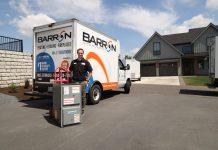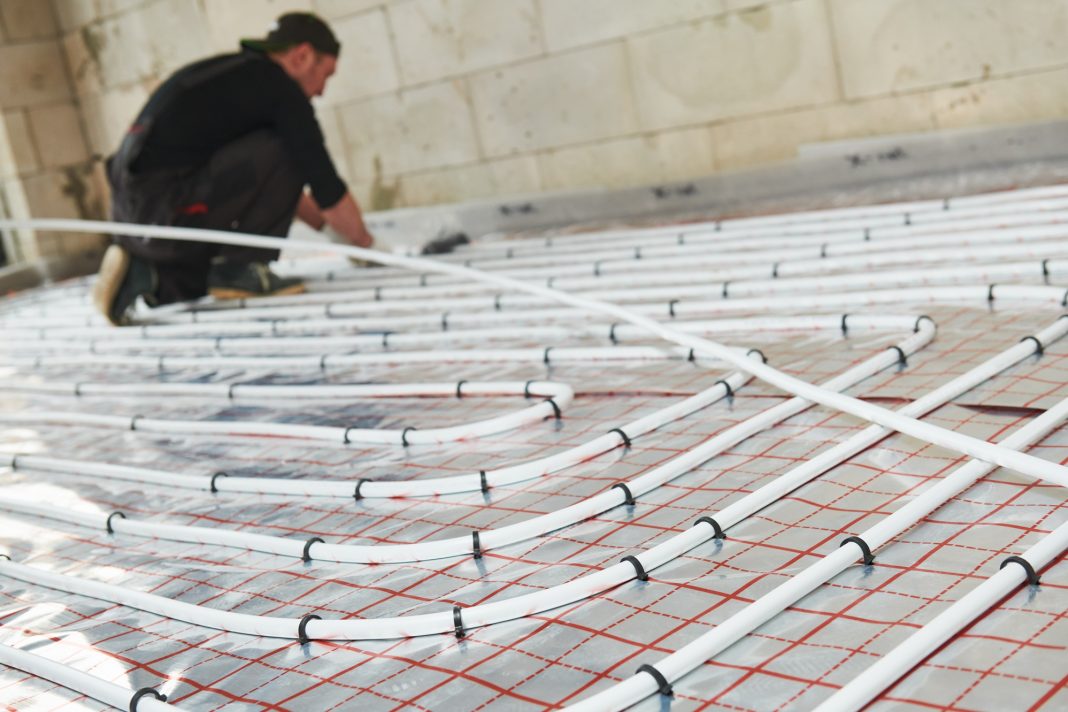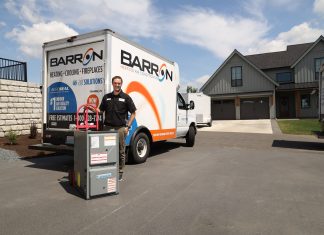After five decades of operation, Barron Heating, AC, Electrical & Plumbing continues to be a local leader in meeting the heating needs of residents. One of the more effective ways Barron can help comfortably and efficiently warm your home is with radiant heat, via methods such as boilers and hydronic heating.
Abe Boursaw, a Barron hydronics and plumbing project engineer, says radiant heat offers numerous benefits over traditional forced air systems. While radiant heat currently makes up a relatively small percentage of our region’s residential heating methods, interest in such systems is growing, especially in newer, high-end custom homes.
If you’re thinking about moving away from a forced air heating method in your home, it’s important to first understand what radiant heating systems do.
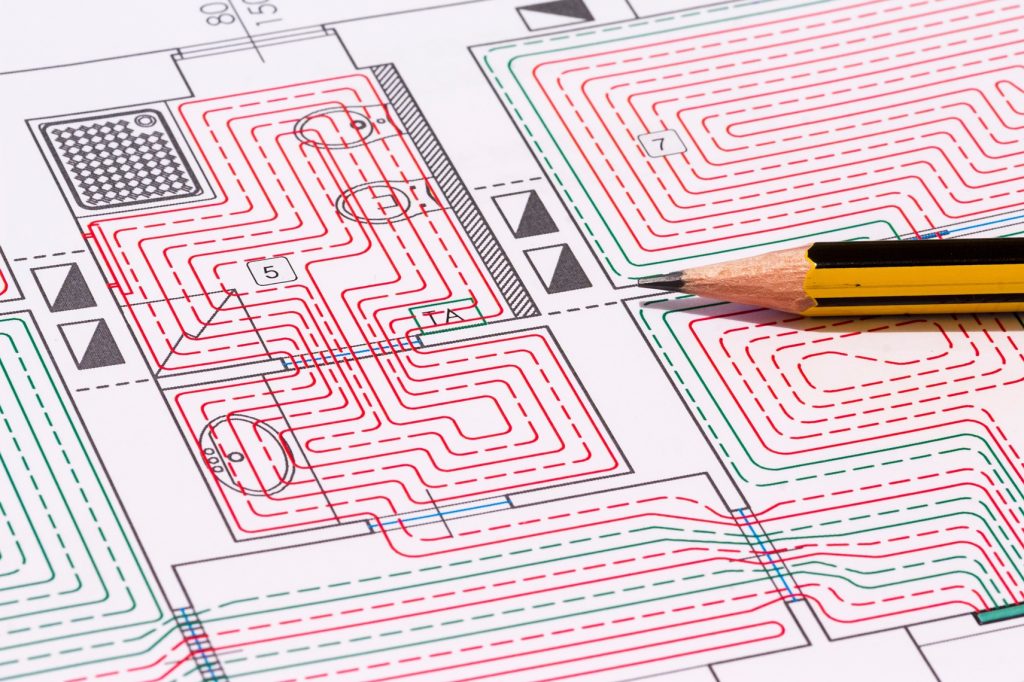
Understanding Radiant Heat
Traditionally, boilers were designed to boil water, heated through the burning of a fuel source like coal, oil or wood, Boursaw says.
This boiled water turns to vapor (steam) and travels through piping to radiators, where heat is then emitted into a room. As the heat in the radiator dissipates, the water cools, condenses back into liquid and drains back to the boiler, where the process begins again.
Modern boilers utilize a wider array of fuel sources, including natural gas, propane and electricity. They also employ a slightly different series of technological devices to achieve their goal. Heat is transferred to a liquid solution, such as water or antifreeze, via a heat exchanger, and a pump then circulates the liquid to heat emitters, which can include radiators but also newer systems like radiant floor heat.
These systems utilize in-floor tubing, circulating the liquid beneath your feet and distributing radiant heat into living spaces. The liquid cools as it reaches the emitters, and the pumps then circulate it back to the boiler for reheating.
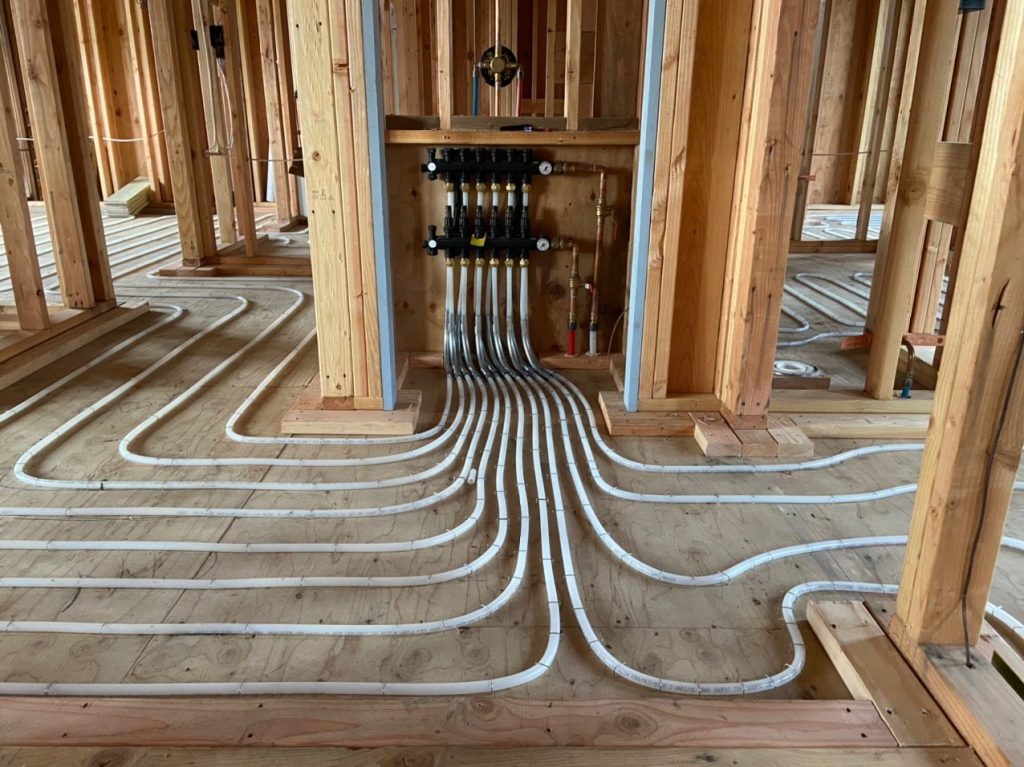
Why Choose Radiant?
The primary reason to use radiant heat is its efficiency.
“Water transfers heat approximately 25 times better than air does,” Boursaw says. “It’s denser. When we’re creating heat, say from a flame from gas in a boiler, that heat’s going to want to go out the exhaust pipe. But the water actually absorbs that heat much quicker than air does, so it makes the equipment more efficient for absorbing the heat, as well as transferring the heat into a home, whether it be floors or radiators.”
Radiant floor systems also provide a greater measure of comfort. By eliminating the ductwork and floor registers of forced-air systems, radiant heating systems are unobtrusive and unnoticeable. Boursaw says you would really need to be next to the boiler or mechanical room to actually hear them operating.
Without floor vents, you also have more freedom to arrange furniture, no longer worried about blocking a heating grate. The elimination of grating from your home can also lead to better health, as it reduces the amount of potential allergens circulating through the air in your home. This makes it an ideal choice for homeowners with air quality sensitivities.
Another benefit is the evenness with which a home is heated.
“It’s a much more comfortable heat,” Boursaw says. “With radiant floor heating, it’s consistent throughout the home, whether you’re standing in the corner by the window, or you’re in the center of a room.”
A home with eight-foot tall ceilings and forced air, he continues, can often result in particularly uneven heat distribution between the floor and ceiling. With radiant heat, it’s far less of a concern.
Finally, radiant heat systems, such as hydronic heating, provide substantial cost-effectiveness, both in their construction and in the savings they offer on utility bills over time.
“It’s an excellent way to zone your home,” Boursaw says. “With forced air, your duct work is fairly large, and you have a single supply trunk. With radiant heat, you can have a living room that’s fairly large – it may take three loops to cover that floor space with tubing – but we can tie those three loops into one thermostat and make that a single zone. A bedroom down the hall can be on its own loop, and we can simply add a thermostat and a valve onto that loop.”
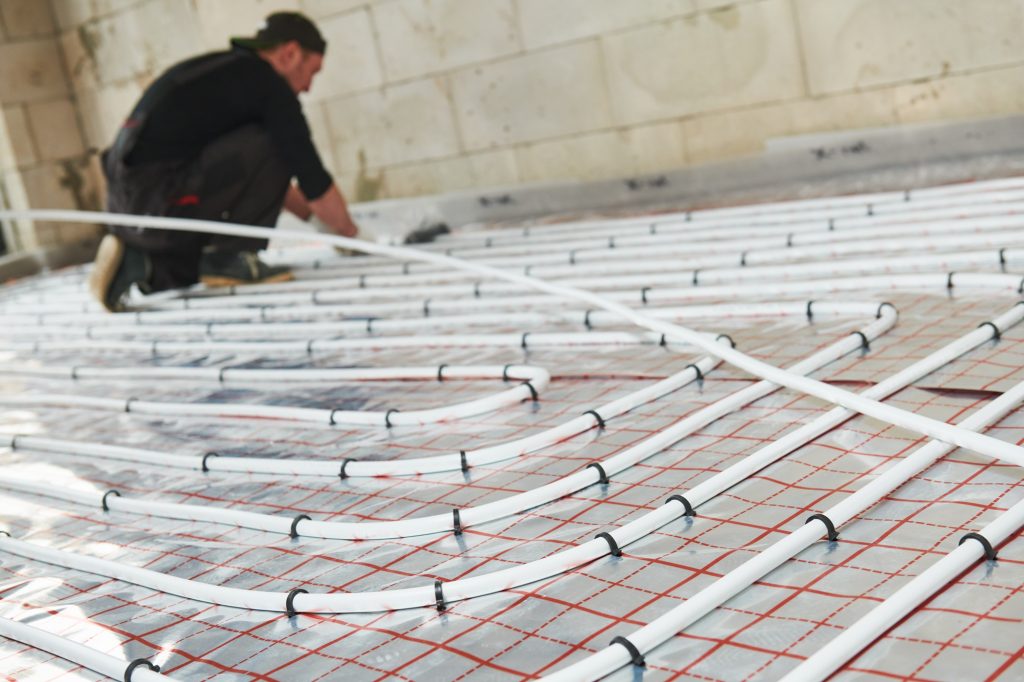
The Future of Radiant Heat
The technology of radiant floor heating continues evolving.
Among the most significant changes, Boursaw says, is that many systems now use geothermal heat pumps. These pumps see hydronic tubing placed into the ground outside a home, at least five feet under the surface.
A heat pump then extracts heat from the ground and transfers it into the circulating water or liquid solution inside the tubes. In the temperate climate of the Pacific Northwest, Boursaw says this works well since the ground often remains at a consistent temperature of 55 degrees, much of the year.
Having absorbed that heat, the water is circulated into your home’s heat system and distributed. These systems are remarkably efficient and cost-effective. While the upfront cost is two to three times that of air-to-water-based heat pumps (which don’t require underground tubing), geothermal heating can result in up to 80% lower heating bills.
Air-to-water heat pumps also have their advantages, and cost roughly one-third what a traditional gas-fired boiler does, Boursaw says. Additionally, some homeowners are exploring advancements in solar-thermal heating, where solar panels provide the heat necessary to produce hot water.
With all these options available, now is a terrific time to speak with a Barron Heating technician about how you can improve the comfort, health and efficiency of your heating system. Call them today at 360.676.1131 and see how they are improving lives in Northwest Washington.
Sponsored




















